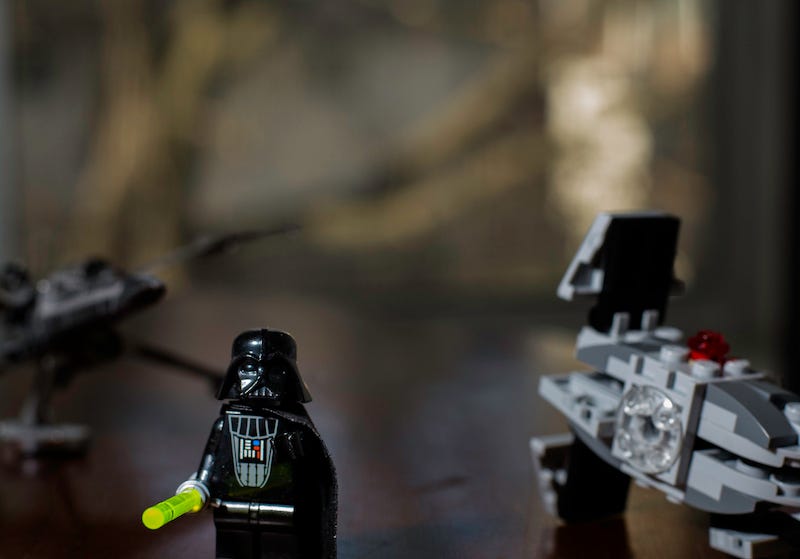By Eric Fleming

In 1977, the world fell in love with a robot for the first time. That year, the first Star Wars movie smashed box office records and introduced a host of characters that became pop culture icons, including the lovable droid, R2-D2. With the creation of R2-D2 and his companion, C-3P0, Star Wars creator George Lucas pioneered the concept that robots could have likeable personalities and be faithful companions to humans. Arriving the same year Apple moved out of a garage in Silicon Valley, these droids seemed as wholly futuristic as lightsabers and warp speed spaceships. Fast-forward to December 2015, when the Star Wars franchise introduced a new loveable robot named BB-8. This time the reaction was different. The question moviegoers asked changed from “Could this be possible someday?” to “Where can I buy one?”
BB-8, named for its resemblance to both two B’s and an 8, became not only the face of Star Wars: The Force Awakens, but also the face of the toy industry in 2015. Sphero’s smartphone-controlled BB-8 robot was one of the best-selling and most talked-about toys in 2015. Sphero is a robotic toy company that specializes in spherical robots, specifically their namesake Sphero robot. They were invited to Disney’s technology accelerator for startups where they were approached by Disney’s CEO Bob Iger about making a toy based on the then-secret BB-8. The Sphero BB-8 is controlled by an app in the user’s smartphone and can either be driven or allowed to explore its surroundings freely, learning and remembering its environment as it bumps into things. The main body is controlled by a self-balancing, gyro-driven ball largely based on the original Sphero toy. The head is attached by two keyed magnets, making it possible to have a freely spinning body underneath a stationary head that allows the robot to always know which direction is forward.
While the BB-8 toy is a fun version of the droid that any Star Wars fan can have as a companion, the Star Wars team developed the closest thing to a working, life-sized BB-8 for promotional events. Due to both time constraints and the necessity of having different robots for different types of shots, Disney’s “creature shop” team didn’t make a fully functional BB-8 for the filming of the movie. Instead, they made many different partially functional BB-8 puppets in order to stick with director J.J. Abram’s desire to depict BB-8 without computer-generated imagery. However, while the team was churning out various BB-8 props for filming, they were also working on their dream of creating a fully functional remote-controlled droid. At the Star Wars Celebration in April 2015, the life-sized BB-8 surprised everyone by rolling out onto the stage. The robot playfully rolled around R2-D2 and displayed its cute and coy personality by the way that it moved and the sounds that it made. The crowd went wild. Unlike the Sphero team, the team from the Star Wars creature shop didn’t reveal how they made BB-8 work. They did, however, reveal that the mechanical technology required to create and operate a full-sized BB-8 is already here.
Every BB-8 made so far has been controlled remotely by a human. The only remaining obstacle to creating a real BB-8 droid is the lack of computing technology necessary for making completely autonomous, self-aware robots with personalities. There are many promising signs that indicate this won’t be an obstacle for long. The amount of research into advanced areas of robotics is only increasing as engineers continue to develop robots that accomplish diverse tasks, from driving cars to communicating with customers in malls. In 2015, Google was granted a patent for their method of creating adaptive robot personalities. Their patent involves having robots that can actively attempt to read human emotions and respond accordingly. Another huge step forward also occurred in 2015 when researchers at New York’s Rensselaer Polytechnic Institute developed a robot that was able to pass a self-awareness test previously thought to only be passable by a human. In the test, the robot was able to recognize its own voice and identify itself as being separate from the other robots in the test. This and other technology could soon be combined in the creation of a self-aware robot with a distinct personality, or perhaps the creation of a loveable droid.
When the original trailer for Star Wars: The Force Awakens was revealed in late 2014 featuring a rolling droid, many people questioned whether or not it was possible to make a machine move in such a way. Disney and Sphero both answered by creating rolling, beeping, heading-spinning, remote-controlled versions of the droid. But, having that question answered only raised a far more important question; with Disney slated to release at least 5 more Star Wars movies, will we be celebrating a future release with a real, autonomous BB-8? As the line between science fiction and reality continues to blur, that galaxy far, far away seems quite a bit closer.
